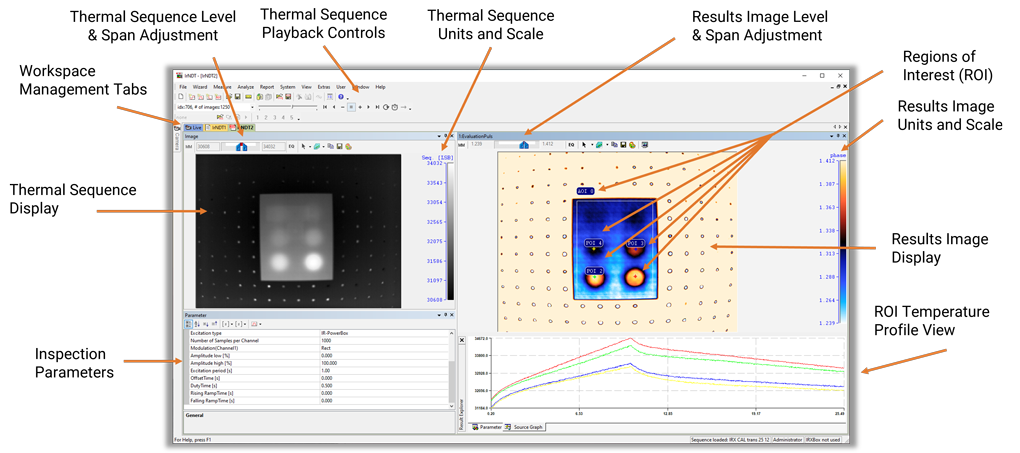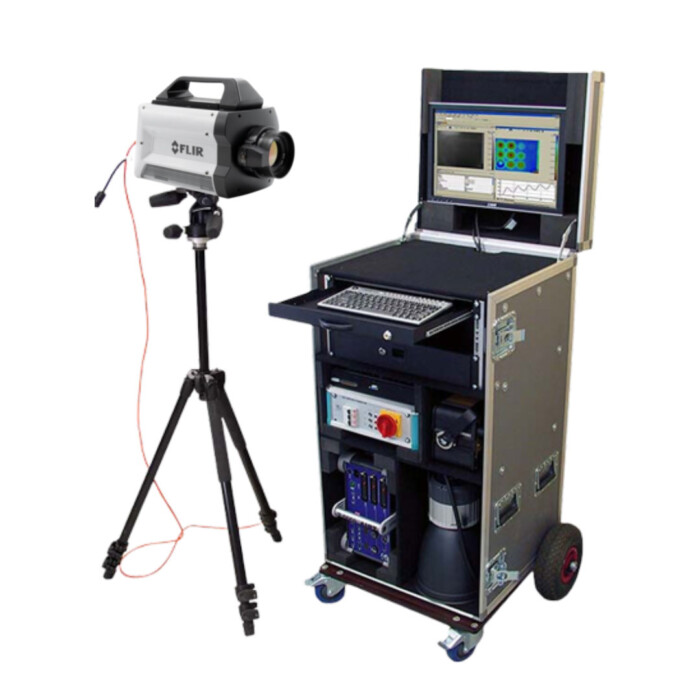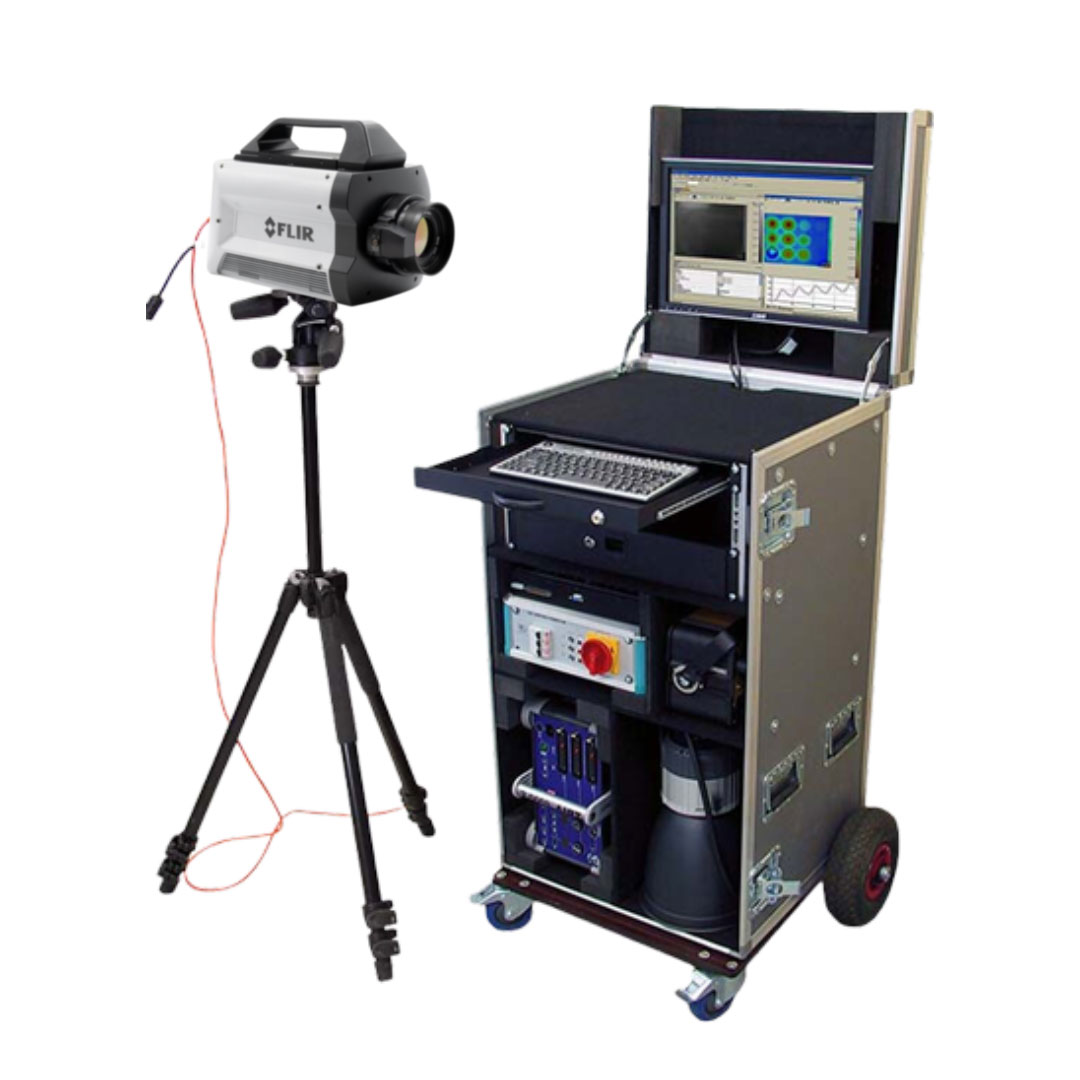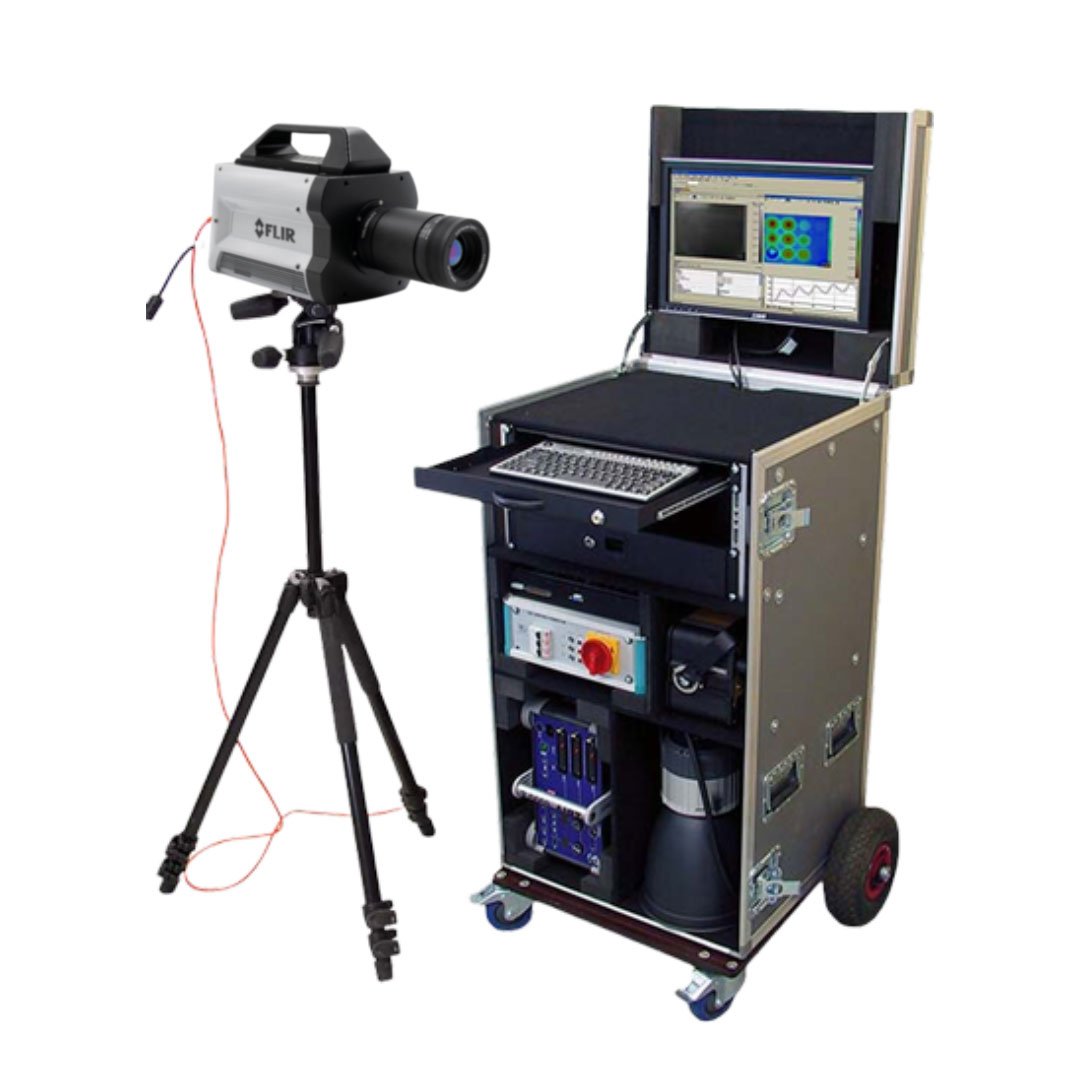FLIR X6800sc MWIR + Complete Active Thermography System
FLIR X6800sc MWIR + Complete Active Thermography System
Guaranteed safe & secure checkout

*We also accept ACH/wire transfer, checks, and purchase orders.
MoviTHERM’s FLIR X6800sc MWIR non‐destructive testing systems use active thermography for the reliable detection of delaminations, impact damages, “near side” defects, water inclusions, debondings, and other defects. The system achieves precise measurements and is ideal for inspecting composites, metals, semiconductors, microelectronics, batteries, ceramics, and more.
Our irNDT system accommodates a wide range of irNDT measurement methods, including: Flash‐Thermography, Lock‐In Thermography, Transient Thermography, and Vibro‐Thermography. It also works with multiple excitation sources and with cooled or uncooled infrared camera systems.
Documentation
Specifications
Camera Specifications
| FLIR X6800sc MWIR Specifications | |
|---|---|
| Detector Type | FLIR indium antimonide (InSb) |
| Spectral Range | 3.0 – 5.0 μm or 1.5 – 5.0 μm |
| Resolution | 640 x 512 |
| Detector Pitch | 25 µm |
| Thermal Sensitivity/NETD | <20 mK |
| Well Capacity | 11.0 M electrons |
| Operability | >99.8% (>99.95% typical) |
| Sensor Cooling | Closed cycle rotary |
| Electronics | |
| Readout Type | Snapshot |
| Readout Modes | Asynchronous integrate while read Asynchronous integrate then read |
| Synchronization Modes | Genlock, Sync-in, Sync-out |
| Image Time Stamp | Internal IRIG-B decoder clock TSPI accurate time stamp |
| Minimum Integration Time | 270 ns |
| Pixel Clock | 355 MHz |
| Frame Rate (Full Window) | Programmable; 0.0015 Hz to 520 Hz |
| Subwindow Mode | Flexible windowing down to 32 x 4 (steps of 32 columns, 4 rows) |
| Dynamic Range | 14-bit |
| On-Camera Image Storage | RAM (volatile): 16 GB, up to 26,000 frames, full frame SSD (non-volatile): 512 GB (supports >4 TB) |
| Radiometric Data Streaming | Simultaneous Gigabit Ethernet (GigE Vision), Camera Link, CoaXPress® 1.1, dual 5 Gb links |
| Standard Video | HDMI, SDI, NTSC, PAL |
| Command and Control | GigE, USB, RS-232, and Camera Link (GenICam protocol supported over GigE) |
| Temperature Measurement | |
| Standard Temperature Range | -20°C to 350°C (-4°F to 662°F) |
| Optional Temperature Range | Up to 3,000°C (5,432°F) |
| Accuracy | ±1°C or ±1% of reading (0°C to 3,000°C on standard lens configurations only) |
| Optics | |
| Camera f/Number | f/2.5 or f/4.1 |
| Available Lenses | 3-5 µm: 17 mm, 25 mm, 50 mm, 100 mm, 200 mm Broadband (1-5 µm): 25 mm, 50 mm, 100 mm |
| Lens Interface | FLIR HDC (4-tab bayonet) |
| Focus | Manual |
| Filtering | Filter wheel, standard 1-inch filters |
| Image/Video Presentation | |
| Palettes | Selectable 8-bit |
| Automatic Gain Control | Manual, Linear, Plateau equalization, ROI, DDE |
| Overlay | Customizable (Timestamp, Date, Integration time, Internal temp, Frame rate, Sync mode, Cooler hours) |
| Video Modes | HD: 720p/50/59.9 Hz, 1080p/25/29.9 Hz |
| Digital Zoom | 1x, 4x, 4:3 |
| General | |
| Operating Temperature Range | -20°C to 50°C (-4°F to 122°F) |
| Shock/Vibration | 40 g, 11 msec ½ sine pulse/4.3 g RMS random vibration, all 3 axes |
| Power | 24 VDC (< 50 W steady state) |
| Weight w/Handle, w/o Lens | 6.35 kg (14 lbs) |
| Size (L x W x H) w/o Lens, Handle | 249 x 156 x 147 mm (9.8 x 6.2 x 5.8 in.) |
| Mounting | 2 x ¼ in. -20 1 x 3/8 in. -16 4 x #10 -24 Side: 3x ¼ in. -20 (each side) |
Description
About the FLIR X6800sc MWIR Camera
The FLIR X6800sc is a fast, highly sensitive MWIR camera designed for scientists, researchers, and engineers. With advanced triggering and on-camera RAM/SSD recording, this camera offers the functionality to stop motion on high-speed events both in the lab and at the test range. The X6800sc has a cooled FLIR indium antimonide (InSb) detector and captures full 640 × 512 images at 520 frames per second or up to 23,077 Hz with windowing.
- On-Camera Recording, Digital Streaming: Save data to on-camera RAM or to the removable solid-state drive (SSD). Stream high-speed, 14-bit data simultaneously.
- Advanced Filtering Options: Incorporates an easy access, four-position motorized filter wheel that permits filter exchange in any environment, and features automatic filter recognition.
- Synchronizing, Triggering, and Software: Maximum versatility for synchronizing and triggering to external events or instrumentation. Works seamlessly with FLIR ResearchIR Max or third-party software.
About the Active Thermography System
MoviTHERM’s FLIR X6800sc MWIR non‐destructive testing systems use active thermography for the reliable detection of delaminations, impact damages, “near side” defects, water inclusions, debondings, and other defects. The system achieves precise measurements and is ideal for inspecting composites, metals, semiconductors, microelectronics, batteries, ceramics, and more.
Our irNDT system accommodates a wide range of irNDT measurement methods, including: Flash‐Thermography, Lock‐In Thermography, Transient Thermography, and Vibro‐Thermography. It also works with multiple excitation sources and with cooled or uncooled infrared camera systems.
Features:
- Non‐contact irNDT
- Works with cooled and uncooled IR Cameras
- Compatible with multiple irNDT methods
- Effective even on low emissivity targets
- Modular hardware and software
- Configurable for different geometries and materials
What is Active Thermography?
Active thermography is an effective method for non-destructive testing of materials involving the induction of heat flow in a test object by external excitation. The heat flow within the test object is influenced by internal conditions and measured on the surface by an IR camera. This technique detects not only the smallest surface defects, but also internal structural defects under the surface.
Active vs Passive Thermography
Active and passive thermography are techniques used for detecting heat patterns and abnormalities in various applications. While passive thermography relies on naturally occurring temperature changes, active thermography introduces an external energy source to create thermal contrast.
How does the system work?
MoviTHERM’s modular irNDT system works by utilizing active thermography. A heat source provides the inspected material with a thermal excitation. The flow of thermal energy through the material has a direct effect on surface temperatures. The surface temperature is recorded over a certain time period with an infrared camera and analyzed by the irNDT software.
The software produces an image that provides information about the internal structure of the material.
- Non-Contact Defect Detection: Active thermography reveals the most subtle defects that are visibly undetectable.
- Flexible & Expandable: Upgrade a system by adding excitation sources, irNDT methods, and higher end IR cameras.
- irNDT Made Easy: Complex analysis technology is simplified for dependable inspection results.
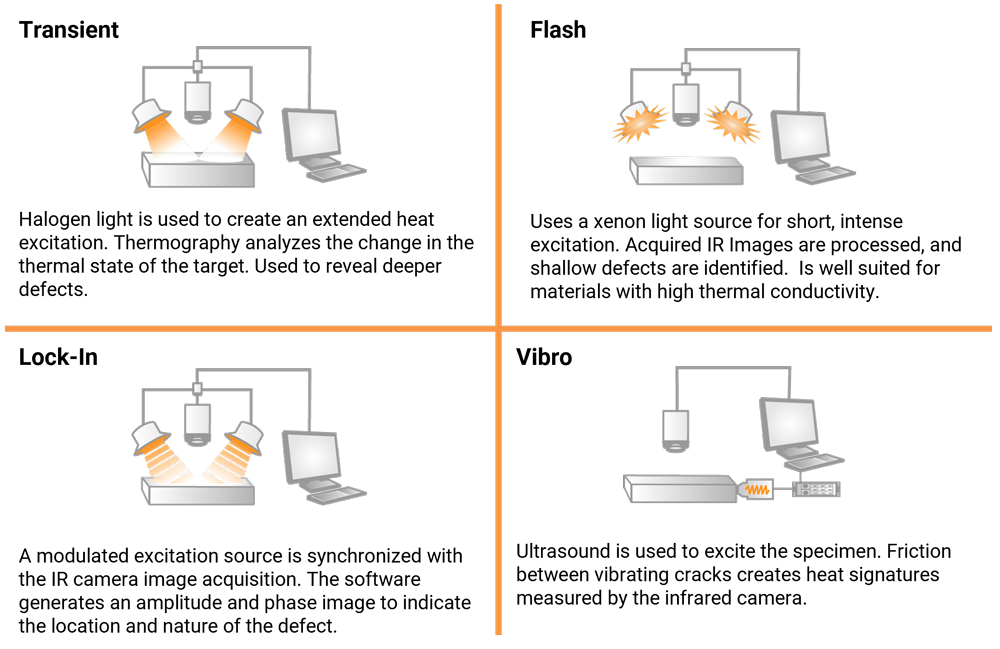
The Software Interface
